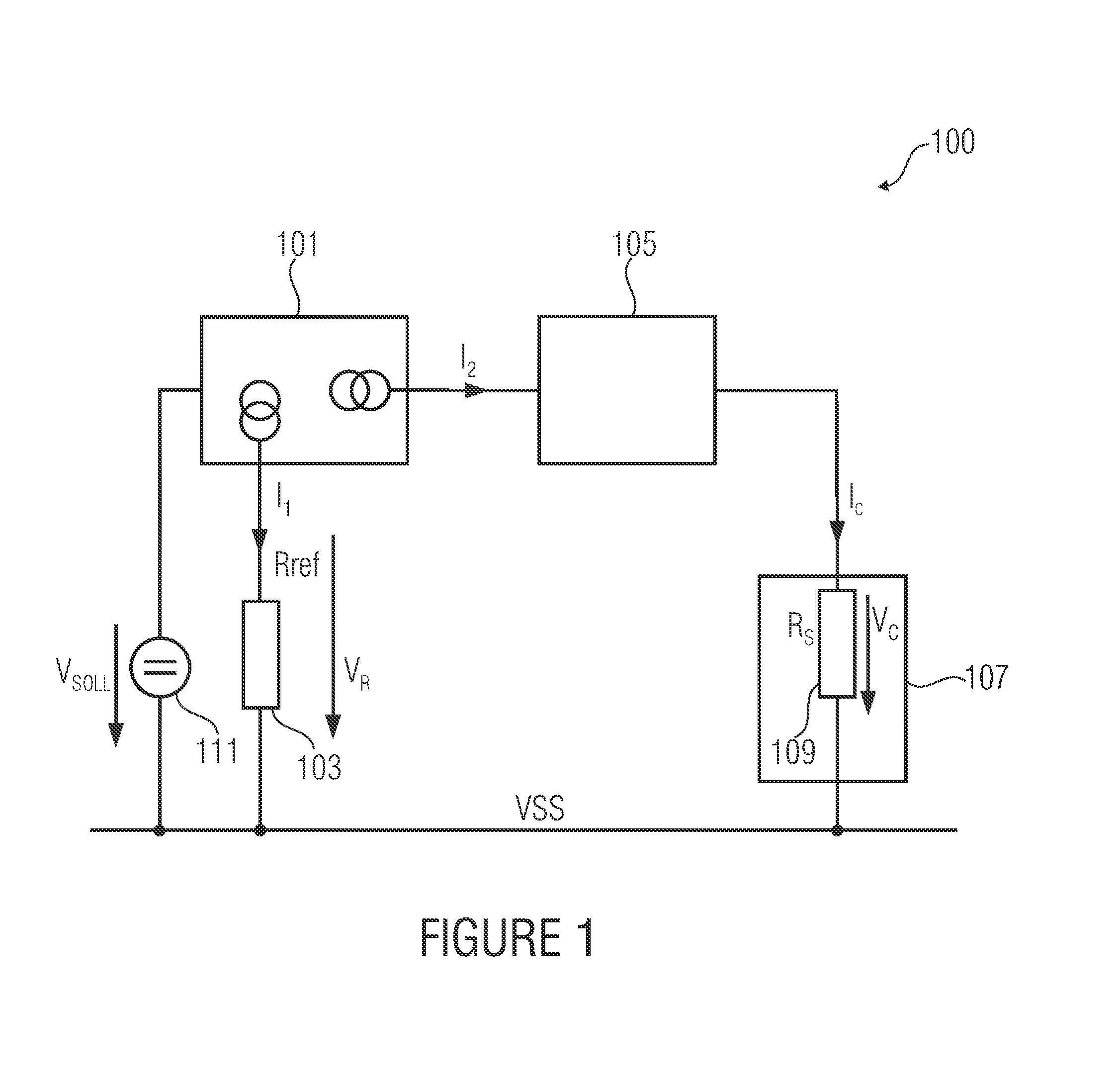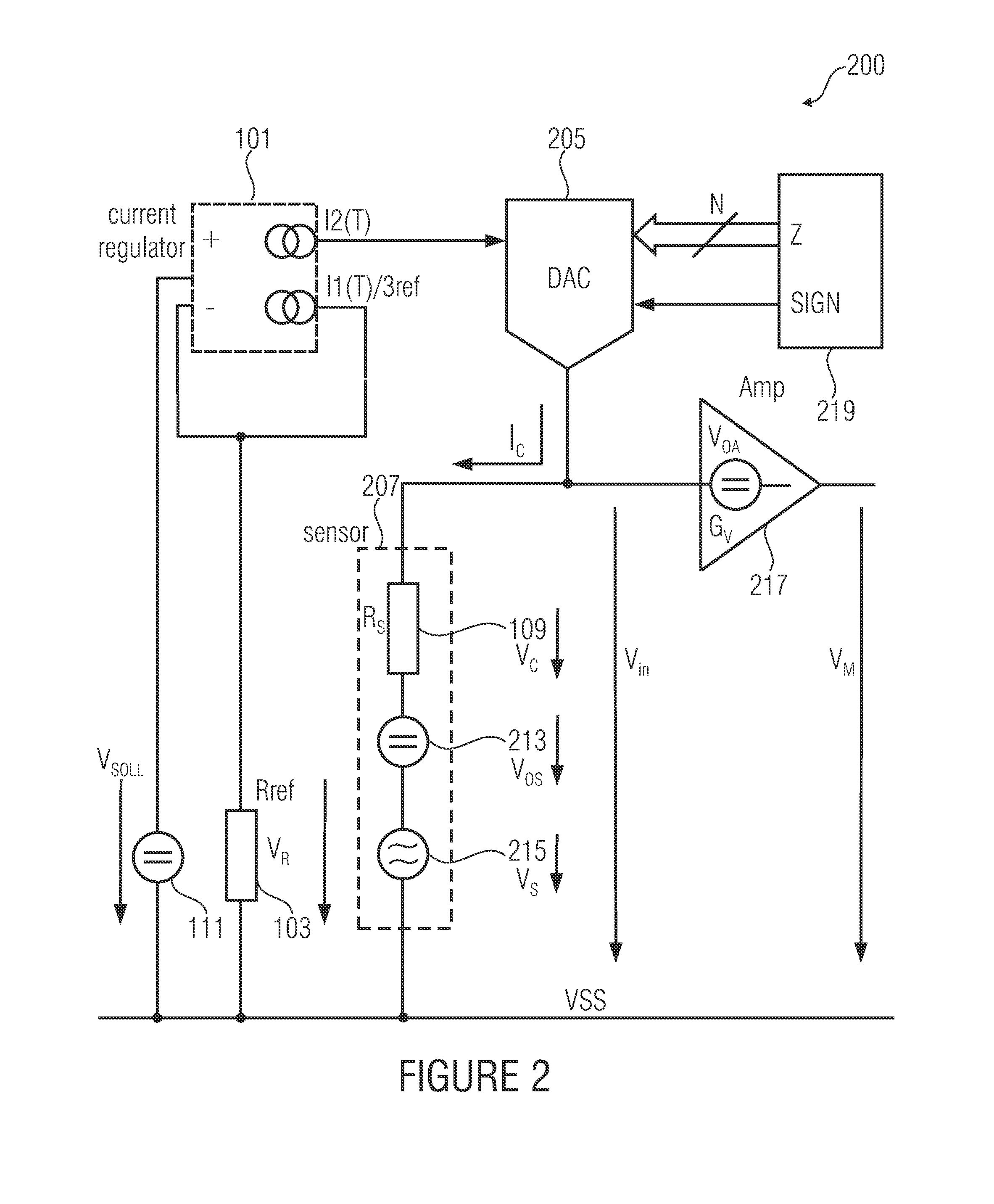Sensor arrangement and method
a technology of sensors and sensors, applied in the field of sensor arrangement, can solve the problems of a small sensor signal being overloaded, the procedure is not optimal in particular with high amplification, and the use signal cannot be extended to the subsequent processing chain, so as to reduce the offset
- Summary
- Abstract
- Description
- Claims
- Application Information
AI Technical Summary
Benefits of technology
Problems solved by technology
Method used
Image
Examples
Embodiment Construction
[0032]Before embodiments of the present invention are described in the following with reference to the accompanying drawings, it is to be noted that like elements or elements of the same function are provided with the same reference numerals and that a repeated description of those elements is omitted. Descriptions of elements having the same reference numerals are thus mutually interchangeable.
[0033]FIG. 1 shows a block diagram of a sensor arrangement 100 according to one embodiment of the present invention.
[0034]The sensor arrangement 100 comprises a current regulator 101, a reference resistance 103 (also referred to as Rref), a feed current scaling means 105 and a sensor element 107 having an internal resistance 109 (also referred to as Rs).
[0035]The internal resistance 109 of the sensor element 107 and the reference resistance 103 comprise a given ratio with respect to each other.
[0036]The current regulator 101 is implemented to provide a reference current by the reference resis...
PUM
 Login to View More
Login to View More Abstract
Description
Claims
Application Information
 Login to View More
Login to View More - R&D
- Intellectual Property
- Life Sciences
- Materials
- Tech Scout
- Unparalleled Data Quality
- Higher Quality Content
- 60% Fewer Hallucinations
Browse by: Latest US Patents, China's latest patents, Technical Efficacy Thesaurus, Application Domain, Technology Topic, Popular Technical Reports.
© 2025 PatSnap. All rights reserved.Legal|Privacy policy|Modern Slavery Act Transparency Statement|Sitemap|About US| Contact US: help@patsnap.com



